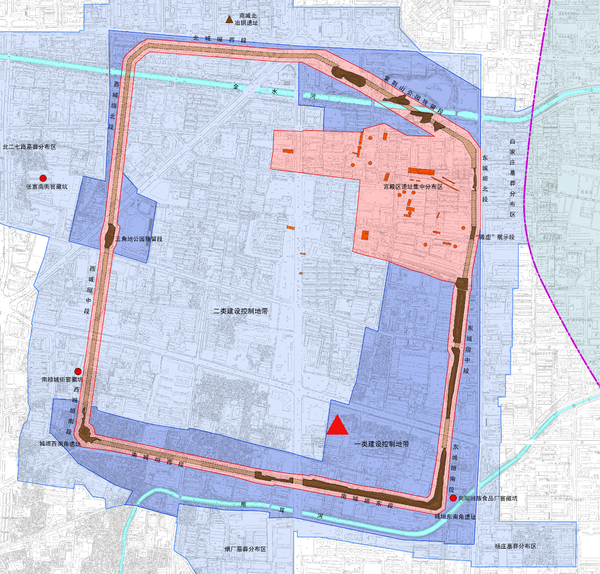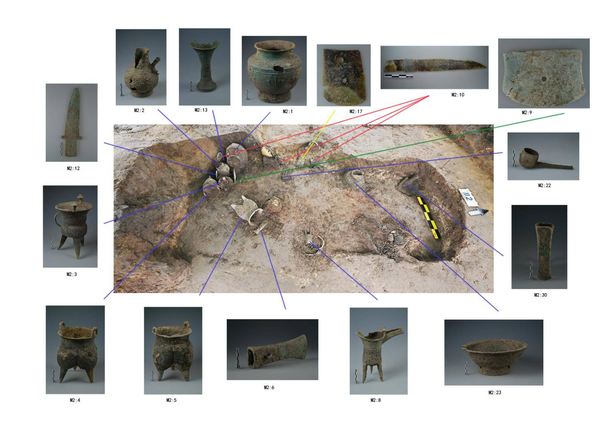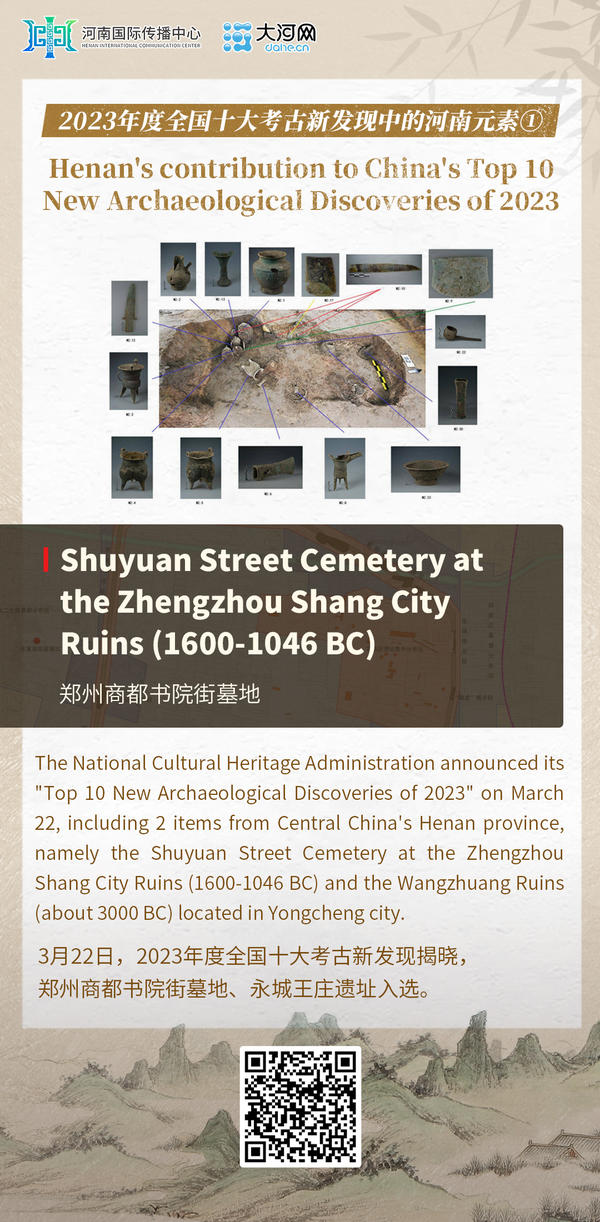The National Cultural Heritage Administration announced its "Top 10 New Archaeological Discoveries of 2023" on March 22, including 2 items from Central China's Henan province, namely the Shuyuan Street Cemetery at the Zhengzhou Shang City Ruins (1600-1046 BC) and the Wangzhuang Ruins (about 3000 BC) located in Yongcheng city.

Gold and bronze masks. [Photo provided to dahe.cn]
To facilitate the infrastructure construction in Zhengzhou, an archaeological excavation led by the Zhengzhou Institute of Cultural Relics and Archaeology was carried out in the area bordered by Zijingshan Street, Dongda Street and Shuyuan Street from June 2021 to February 2023, with 15 thousand square meters excavated and 1,710 remains of different dynasties discovered, including the Shang Dynasty (1600-1046 BC), the Waring States Period (475-221 BC), the Han Dynasty (202 BC-220 AD), the Tang Dynasty (618-907), the Song Dynasty (960-1279), the Ming Dynasty (1368-1644) and the Qing Dynasty (1644-1911). Some remains of the Tang and Song are believed to be related to the Kaiyuan Temple built in the Tang Dynasty. The Shang remains, large in number and rich in type, are one of the major discoveries during the excavation, covering a noble cemetery of the Baijiazhuang Period of Shang near Shuyuan Street, ash pits and housing foundations.
With an existing area of some 10 thousand square meters, this cemetery is located in the southeast of the inner city of the Capital Ruins of Shang in Zhengzhou, about 450 meters away from the east city wall and 200 meters away from the south city wall.
Shuyuan Street cemetery. [Photo provided to dahe.cn]
It is a high-rank noble cemetery of the Baijiazhuang Period with a clear layout and complete functions. Together with 3 storage pits for bronze wares of the same period, it is of great academic value for studying the rise and fall of the Capital Ruins in Zhengzhou, the relationship between this Ruins and the Xiaoshuangqiao site (both are located in Zhengzhou), the capital construction of the Xia (2070-1600 BC) and Shang, the Shang culture, and the origins of Chinese civilization.
The discovery of the trenches enclosing the cemetery helps push the history of the cemetery trenches up to the early Shang Dynasty, which was a groundbreaking for the cemetery layout and noble funeral system in Chinese history. Besides, the excavation not only provides new materials for studying the feature of the noble cemetery near Shuyuan Street, capital construction, and functions and layout of the Capital Ruins of Shang Dynasty in Zhengzhou, but also refreshes the knowledge of the layout in the southeast area of the Ruins.
Some cultural relics unearthed from M2 tomb. [Photo provided to dahe.cn]
It is worth noting that 6 sacrificial pits containing dog remains were discovered beneath the M2 tomb, showing the unique sacrificial culture of the Shang Dynasty. Besides, the unearthed burial objects - the combination of bronze wares, gold and jade articles - reflect the funeral customs of the early mid-Shang Dynasty. Gold and bronze masks as well as gold round-shaped objects were unearthed from the early-to-mid Shang tombs for the first time, providing evidence for studying the origins of gold masks found at the Sanxingdui site and the exchanges between the Chinese and Western civilizations.
Text: Zhao Hanqing & Yang Jiaxin
Poster: Hu Hanze
Proofreader: Li Wenjing





